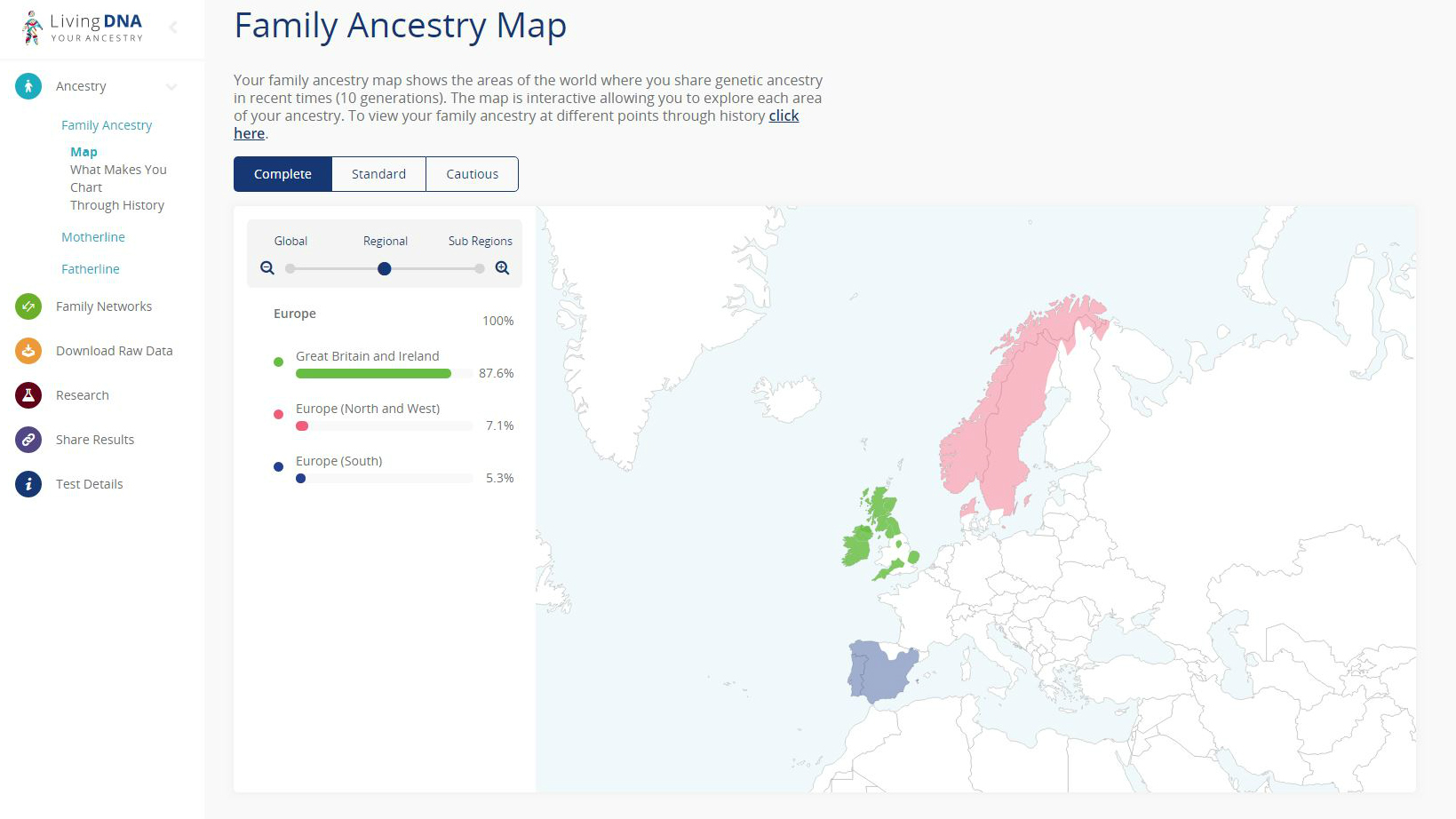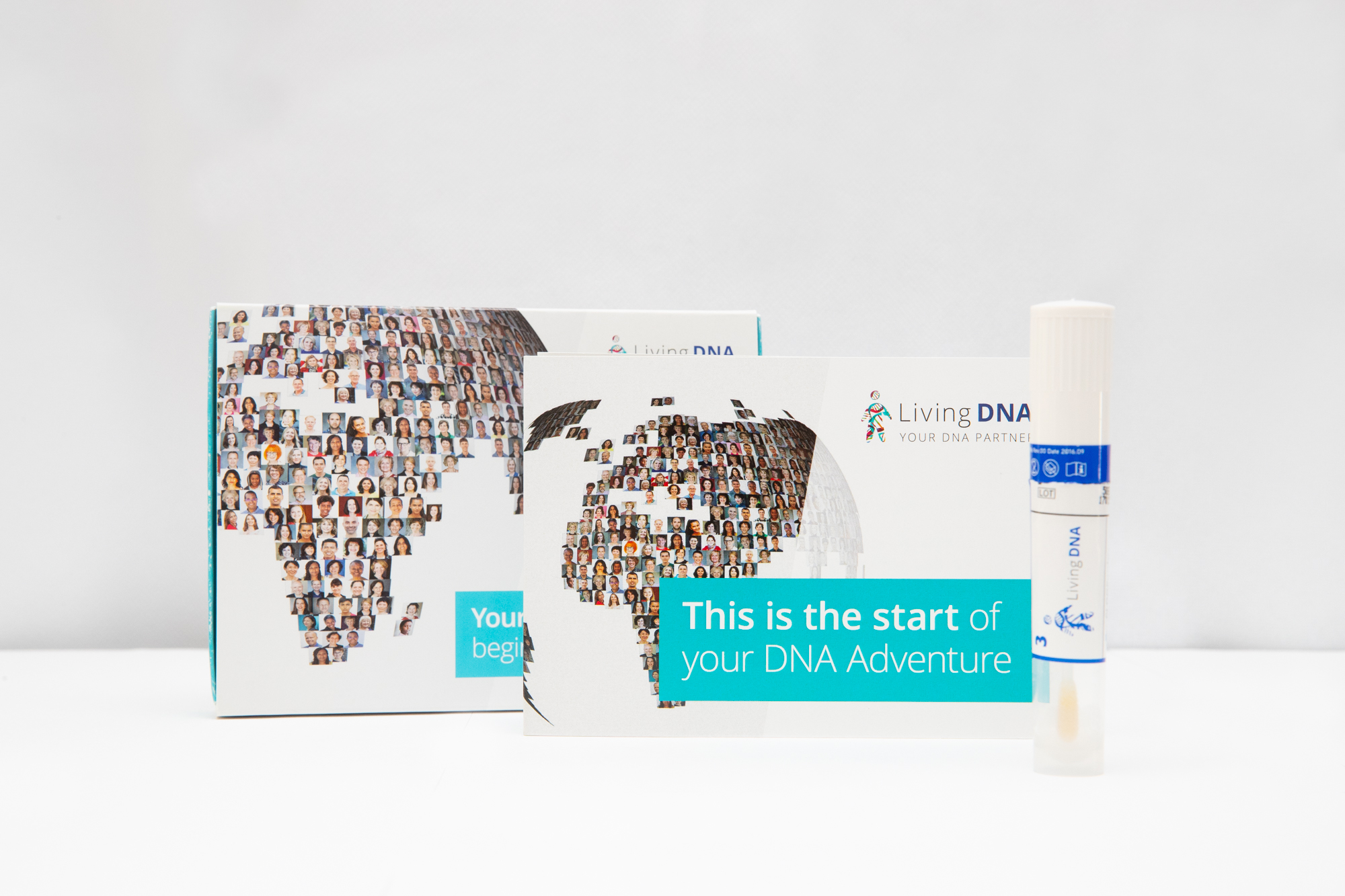TechRadar Verdict
Living DNA’s test is easy to administer and its results are clearly presented, but the vagueness of some of its results combined with its relatively high price mean it doesn’t stand out from the crowd.
Pros
- +
Foolproof, simple mouth swab test
- +
Results are interesting and clearly presented
- +
Detailed breakdown of heritage by UK regions
Cons
- -
Some ancestry results point to large, vague areas
- -
Relatively expensive, especially for UK
- -
Motherline and Fatherline results don't add much
Why you can trust TechRadar
If you've ever wanted to know where you've come from, there are a number of services that offer that. But what if you wanted to follow it based on where each of your parents came from?
Living DNA is an ancestry test that breaks down your heritage into geographic regions. You order your Living DNA kit, complete a mouth swab at home and then send it off to the company, receiving your results digitally via an online portal.
Living DNA is a 'triple test': alongside your direct family ancestry, which can include data from the past 10 generations, it will also let you trace your motherline and fatherline.
All fatherline results come from the Y chromosome, and only genetic males have a Y chromosome, so you can only trace your fatherline if you’re a genetic male.
The ancestry regional breakdown is more detailed than some other testing companies, with data for 80 regions worldwide available to be cross-checked.
What's in the kit?
The Living DNA sampling kit comes with a guide for the test, a mouth swab and container, a pouch for the completed swab, and a return pre-paid mailing envelope.
Rather than telling you how to take the swab via text instructions, the guide directs you to a video online, which is much easier to follow.
Sign up for breaking news, reviews, opinion, top tech deals, and more.
It’s a compact package that will fit through your letterbox and contains everything you’d expect from a home DNA testing kit.

What's the price of Living DNA?
Living DNA costs £99 / $99 / AU$169 plus standard shipping of £9.95/$9.95/AU$14.95, which is in line with other ancestry tests in the US, but slightly more expensive that others in the UK — 23andMe’s ancestry test costs £79 / $99, which is the same as Ancestry’s DNA test.
(It's worth noting that these kits can often be discounted during Black Friday or Amazon Prime Day deals - and with the latter just around the corner, it might be worth taking a look to see if it's going to get a small price drop).
You can also add a glossy Ancestry Book that summarises your results for an extra £39 / $69 / AU$79, shipping included.
That seems pretty pricey: it doesn’t contain any extra information, and the digital results are far easier to navigate.
Is Living DNA safe? What about privacy?

Living DNA promises it will never share your data with third parties without permission. In its privacy policy, the company says that it might share “aggregate data” with other companies, “but only where you cannot be identified from this data”. It may also share data during court and legal proceedings when required.
We felt satisfied that our data was secure in Living DNA’s cloud system, and nobody has reported data breaches or unauthorised data sharing.
The company uses a variety of security measures to keep your information safe, including encrypting data and storing your name and information separately.
After receiving your results, you can decide to let your DNA be used for research. The Living DNA website talks you through the process and clearly explains any decisions about sharing your data. You can delete your data or withdraw consent at any time.
If you use Living DNA, make sure you read all pop-up messages carefully after you get your results: don’t just click through check boxes blindly, because you might be agreeing to share your data when you don’t mean to.
How easy is Living DNA to use?
Living DNA’s test is easy to understand and perform. First, you must activate your kit using a code in the pack you’re sent, then watch a video online about how to take your mouth swab.
You need to swab your mouth for 45-60 seconds and you can’t eat, drink or smoke for an hour before taking the test. The video goes through the process step-by-step, and we had no trouble with any of it.
The packaging all feels robust: the swab slides into its container with a reassuring click and the return envelope fully seals, which gave us peace of mind that my sample would get through the post safely.
Results usually arrive in 6-8 weeks after Living DNA receives your sample, which is the same as other services such as Ancestry DNA.
What's in the Living DNA results?

Your results are split into three parts: Family Ancestry, Mortherline and Fatherline. The ancestry portion gives you a percentage split of your recent family ancestry by region and sub-region, such as Scandinavia or the Iberian Peninsula.
In the UK, it can drill down into even smaller areas — we had results for Devon, Northwest Scotland and East Anglia, for example. The data is displayed in a map, a chart, and as an outline of a human made up of dots, with different colours representing different geographic areas.
The Family Ancestry data is provided at three levels of certainty. ‘Cautious’ is just the results it’s most certain of, ‘standard’ includes a few educated guesses, and ‘complete’ — the least accurate — attempts to map all your genetic data to geographical regions. You can also view a timeline that shows how your ancestors moved around over the past 80,000 years.
For your motherline and fatherline, Living DNA tells you your haplogroup, which is basically a group of genetically similar individuals that share a common ancestor.
It gives you a detailed history of each group and has maps to show where members are found most often today, as well as how that group spread from a common ancestor over thousands of years.
These group histories are well-written, citing reference material such as journal articles, books and magazine pieces if you want to find out more.
We didn’t actually feel the need to dig into these references because Living DNA’s histories told us what we wanted to know about our heritage, but it’s good to know they exist.
Are the Living DNA results accurate?
Living DNA doesn’t say exactly how big its database is, but it has data from 80 regions. That’s fewer than 23andME, which has over 1,000 after a recent update.
Living DNA's reference panel, where it draws its data findings from, includes 12,000 people from 80 regions. That's more potential regions that might show as an ancestry percentage on your results, but in terms of population it's in line with competitors: 23andMe's reference panel is around 10,000 people, while Ancestry's is around 16,000.
It’s certainly enough to give you a good idea about your heritage: we care more about knowing that our ancestors were from the Iberian peninsula than from a certain region of Spain, for example.
The information on the UK regions, however, are very specific, so if you know that your immediate family all came from the UK it will provide you a detailed breakdown of which counties and regions they’re from.
As with other heritage tests, it’s difficult to know exactly how accurate Living DNA’s results are. Our results split our ancestry largely between Ireland and the United Kingdom, which matches what we know about our heritage: roughly three-quarters of our family is Irish or British.
We also have a grandfather, and a set of great grandparents, from Eastern Europe. The results showed ancestry present in Europe, but only in Scandinavia and the Iberian Peninsula, made up of Spain and Portugal.
When we switched the results from ‘complete’ to ‘standard’ or ‘cautious’, those European portions became less specific, expanding to simply Southern Europe and, even more generally, Europe as a whole.

It’s entirely possible that the noted Eastern European family had ancestors from Scandinavia and Southern Europe, and the test can touch on ancestors from up to 10 generations back. But without doing extensive family research, it’s impossible to know.
As Living DNA itself notes, all family ancestry results “are estimates, and are based on comparing your DNA to a range of reference samples”.
Still, we liked how detailed the results were, especially in the UK, and each region came with a lengthy history of the area and the people that lived there, which we enjoyed reading.
Our motherline and fatherline information was all based on a group that we were a member of, so it felt less personal, but it was still interesting to see where people with similar genetic makeup were living in the world today.
What else does Living DNA tell you?
When you get your results, you can also opt-in to a service called Family Networks. It will alert you if it finds someone it believes to be a relative, allowing you to contact them if you want.
We only had one suggestion: a fifth cousin, but the idea that the test can help you can connect with family as well as tell you more about your past is a neat one.

Verdict
Overall, we were impressed with the Living DNA kit. Using the mouth swab is foolproof and the video instructions for the test were easy to follow.
While it’s impossible to know just how accurate the results were — as it is with all ancestry tests — Living DNA roughly matched what we knew about our family, and displayed everything in clear, colourful ways that are easy to understand.
Learning about the motherline and fatherline felt less personal, but at least taught something new about our heritage.
First reviewed: June 2019
All images credit: Living DNA
